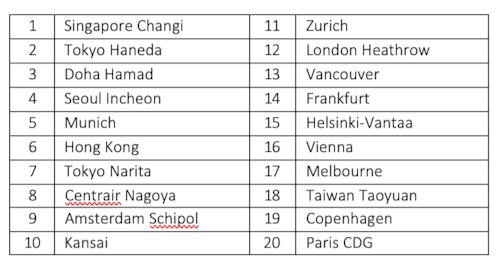
David McKelvey via Flickr
Munich’s Lessons for U.S. Airports

Nick Lokker
Georgetown University
Nick Lokker is a graduate student at Georgetown University’s Walsh School of Foreign Service, where he is pursuing his MA in German and European Studies. He has an academic focus on transatlantic security policy and EU-Russia relations. Nick previously worked for AICGS as a research intern during the summer of 2020. His duties included assisting the AICGS president and fellows with research as well as writing for the AICGS website.
Nick's other work experience includes internships with the Center for a New American Security's Transatlantic Security Program, the Center for European Policy Analysis, and the European Parliament. He speaks French, Spanish, and some German and Russian.
Most airport travel in the United States is less than pleasant. A typical experience may include long waits in drab and uninviting corridors, a greasy pre-flight fast food meal, and a liftoff view over a sea of concrete. Yet, hard as it may be to believe, this does not need to be the case. For proof, look no further than Germany’s Munich International Airport—a refreshing example of how intelligent planning can allow airport operators to create an enjoyable atmosphere for travelers, while at the same time achieving environmental and financial sustainability.
In the latest edition of the annual World Airport Awards (WAA), Munich’s airport ranked fifth in the world and first in Europe. This achievement is not new: over the past fifteen years, the airport has been rated best in Europe thirteen times and never dropped below seventh place globally. By contrast, the first U.S. airport to show up on the 2020 list is Houston at number thirty-one, followed by Denver at thirty-seven and Atlanta at forty-one.
Top 20 Airports in the World

Such an unfavorable comparison makes it clear that even the best airports in the U.S. would do well to take guidance from Munich’s achievements. What, then, might some of these potential lessons be?
In its 2019 integrated report, the airport’s operator Flughafen München GmbH (FMG) proudly emphasizes its “business model that conforms to economic, ecological, and social requirements.” Admittedly, many companies tend to claim a similar commitment to vaguely-defined yet impressive-sounding goals. Yet FMG sets itself apart by faithfully implementing this mission statement, consistently working to develop innovative strategies that allow it to achieve each of these three core objectives: an agreeable experience for its customers, positive impact on the environment, and profits for its shareholders.
Beginning with the social element, Munich Airport frequently receives high praise for its array of restaurants, stores, and entertainment venues. Skytrax gives it near-perfect ratings for both “food and beverage choice” and “selection of shops,” while the authors of the 2020 WAA specifically highlight its resemblance to a “city center, offering travelers and visitors plenty to see and do.” Particularly unique offerings of the airport include a visitors park where guests can take advantage of a playground and miniature golf course, as well as an enormous yearly Christmas market featuring live musical performances, assorted culinary delicacies, and even an ice-skating rink.
Alongside this impressive effort to relieve the customary stress of air travel, FMG earns distinction by upholding its responsibility to safeguard the environment. The operator’s annual integrated reports include transparent figures on the airport’s carbon footprint, directly comparing them with its long-term emissions goals. Its successful fifteen-year trend of declining emissions is due largely to a number of forward-looking policies such as the installation of photovoltaic arrays for solar power generation on the roof of Terminal 2, widespread adoption of energy-efficient LED lighting, and increased use of hybrid and electric airport vehicles.
FMG’s ecological awareness concerns the local level as well as the global. The airport’s planners go to great lengths to offset any negative impact on the surrounding area, reserving considerable amounts of green space including special “compensation areas,” which serve as homes to rare bird and plant species in order to preserve local biological diversity. Furthermore, observers have praised the airport’s great care in containing, treating, and reusing the water-chemical runoff from the its winter de-icing methods.
Finally, and perhaps most remarkably, Flughafen München GmbH manages to do all of this while earning record profits year after year. In terms of revenue it punches well above its weight, having earned the fifteenth most of any airport in the world in 2018, despite only accommodating the thirty-ninth most passengers. While there are multiple possible explanations for this exceptional financial performance, it is reasonable to presume that the airport’s investments in its amenities have paid off—making passengers more inclined to linger, enjoy themselves, and spend.
Going forward, U.S. airports that hope to improve themselves and draw back wary travelers in the wake of the COVID-19 pandemic should emulate FMG’s proven strategy for success, in the recognition that positive social and environmental impact are not only worthy ends in themselves, but can in fact also benefit their bottom lines. If this happens, perhaps someday one will even be able to look forward to, rather than dread, an upcoming flight.









